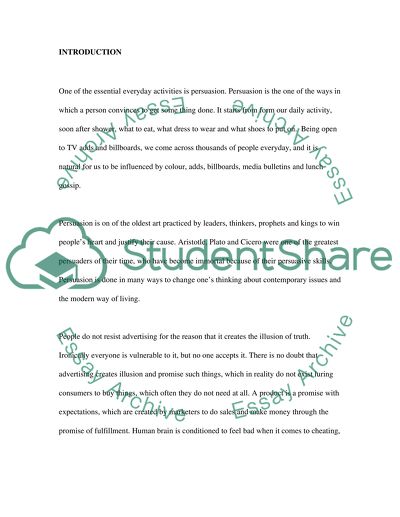Cite this document
(“Persuasion and Influence Essay Example | Topics and Well Written Essays - 3750 words”, n.d.)
Persuasion and Influence Essay Example | Topics and Well Written Essays - 3750 words. Retrieved from https://studentshare.org/psychology/1518669-persuasion-and-influence
Persuasion and Influence Essay Example | Topics and Well Written Essays - 3750 words. Retrieved from https://studentshare.org/psychology/1518669-persuasion-and-influence
(Persuasion and Influence Essay Example | Topics and Well Written Essays - 3750 Words)
Persuasion and Influence Essay Example | Topics and Well Written Essays - 3750 Words. https://studentshare.org/psychology/1518669-persuasion-and-influence.
Persuasion and Influence Essay Example | Topics and Well Written Essays - 3750 Words. https://studentshare.org/psychology/1518669-persuasion-and-influence.
“Persuasion and Influence Essay Example | Topics and Well Written Essays - 3750 Words”, n.d. https://studentshare.org/psychology/1518669-persuasion-and-influence.


